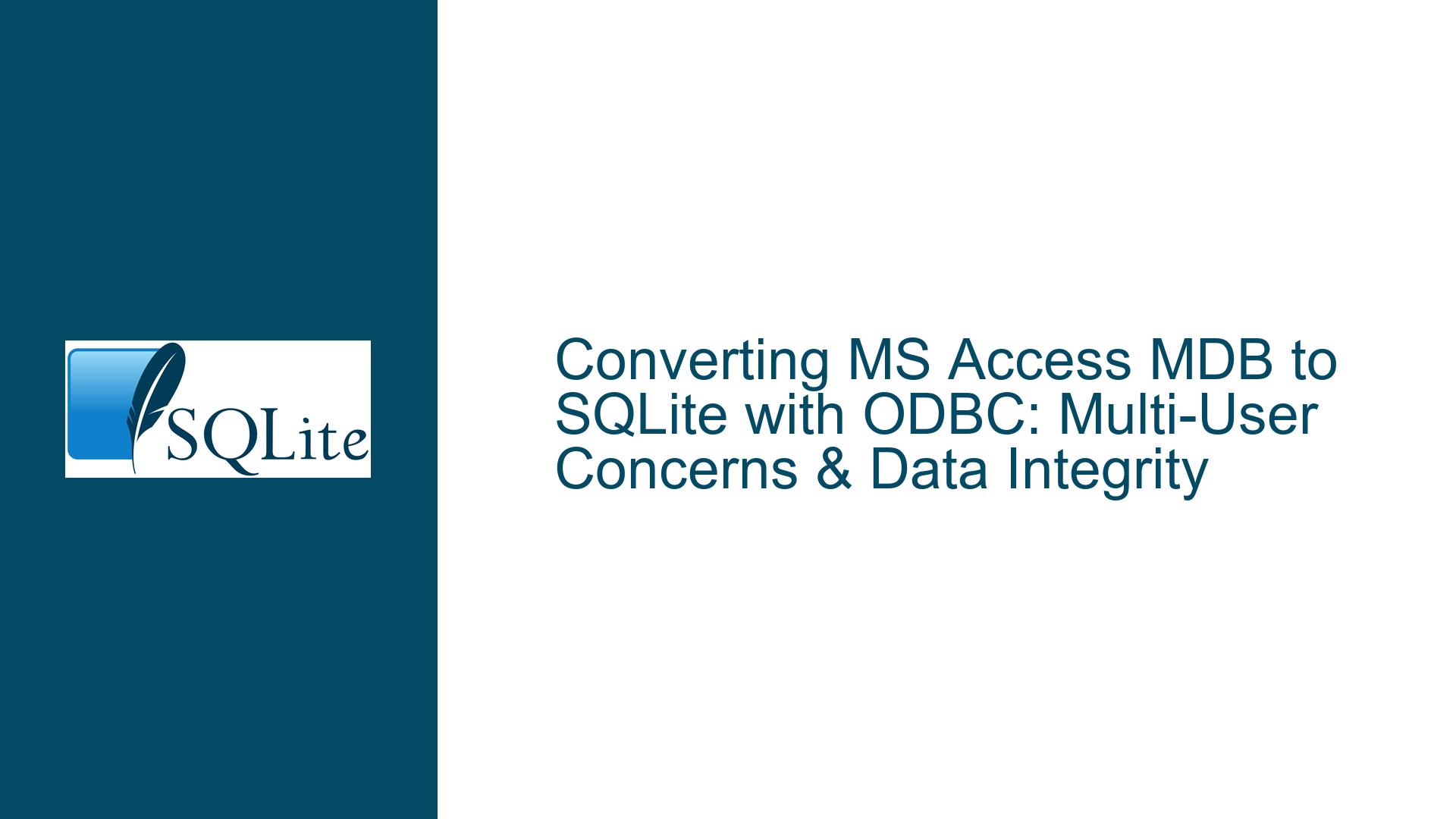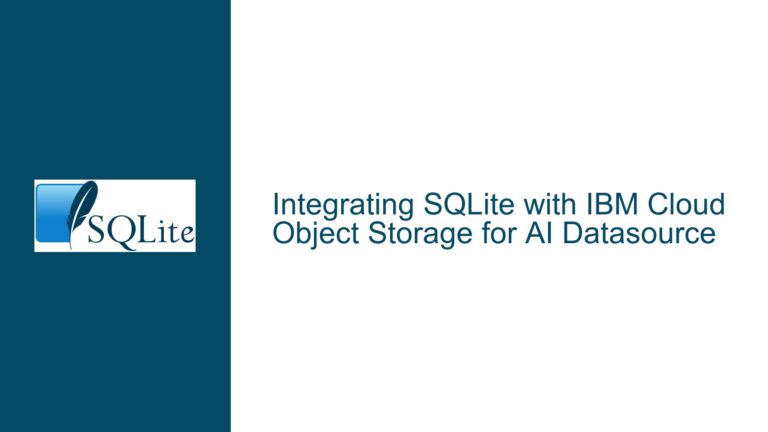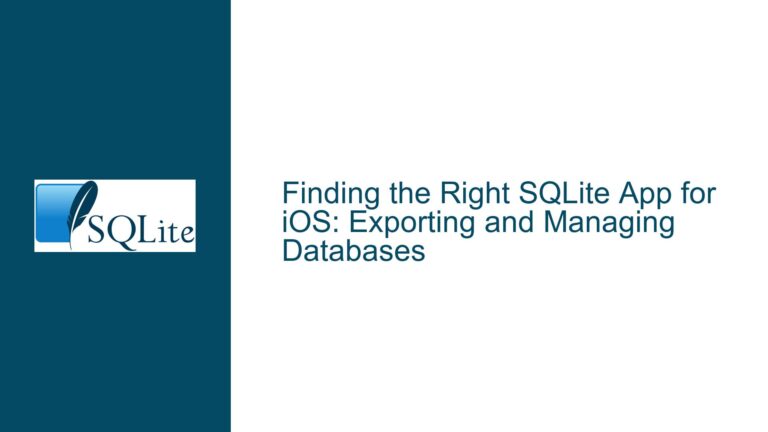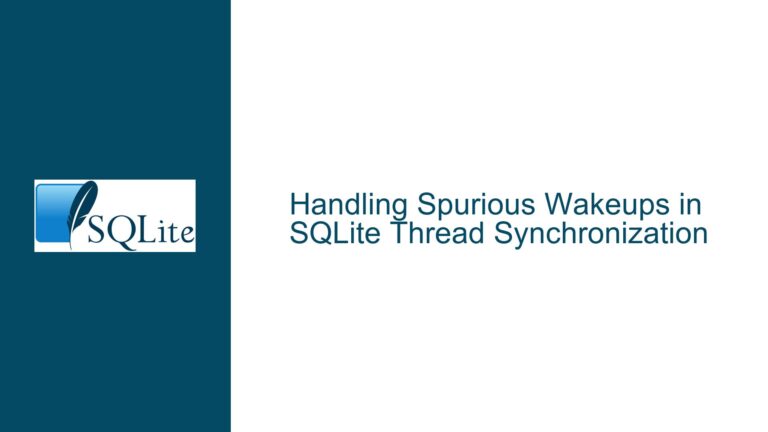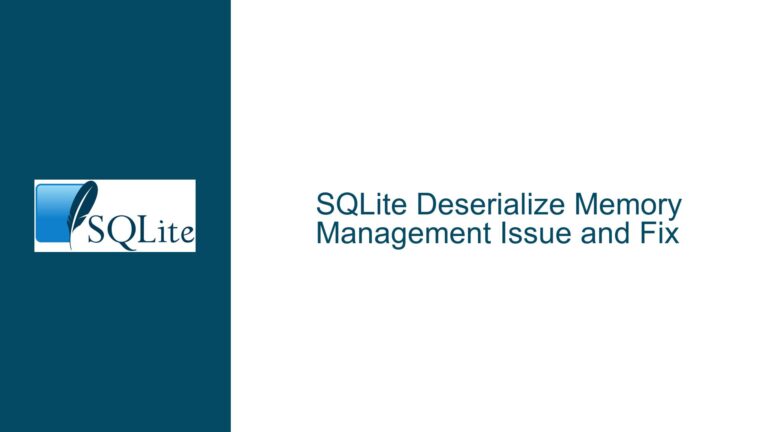Converting MS Access MDB to SQLite with ODBC: Multi-User Concerns & Data Integrity
Migrating MS Access Backend to SQLite While Maintaining ODBC Connectivity and Concurrency
The process of migrating an MS Access database (.mdb/.accdb) to SQLite involves three interrelated challenges: schema conversion fidelity, data type compatibility, and maintaining multi-user access through ODBC. The core tension arises from SQLite’s architecture diverging from MS Access’s hybrid file-based/client-server behavior. While SQLite eliminates Jet/ACE engine dependencies and offers portability, its concurrency model and lack of native ODBC integration with MS Access frontends introduce risks of data corruption, locking conflicts, and query inefficiencies.
Key technical hurdles include:
- Schema Translation: Access-specific features (e.g., AutoNumber fields, composite primary keys, Yes/No Boolean types) require manual adjustments for SQLite’s typeless affinity system.
- ODBC Driver Limitations: Third-party SQLite ODBC drivers (e.g., sqliteodbc, ChWerner) may misinterpret data types or fail to handle concurrent write operations gracefully.
- Concurrency Assumptions: MS Access frontends expect row-level locking and transactional isolation, but SQLite employs database-level locks during writes, leading to contention.
- Data Migration Pitfalls: Date/Time formats, floating-point precision discrepancies, and memo field truncation during bulk transfers.
The forum discussion highlights a critical misunderstanding: SQLite can serve multi-user workloads but lacks built-in client-server arbitration. ODBC exacerbates this by introducing additional latency and connection pooling complexities. Successful migration demands rigorous testing of write-heavy scenarios under simulated user loads.
Root Causes of ODBC Locking Conflicts, Data Corruption, and Schema Mismatches
1. SQLite’s Write Locking Mechanism vs. MS Access’s Jet-Based Expectations
MS Access users accustomed to Jet/ACE’s pessimistic locking (file-level or page-level) may misinterpret SQLite’s WAL (Write-Ahead Logging) mode or default rollback journal behavior. SQLite serializes write transactions, causing blocking when multiple ODBC connections attempt simultaneous INSERT/UPDATE operations. The ODBC layer compounds this by holding transactions open longer than necessary, especially in bound forms or reports.
Example: An MS Access frontend using a linked SQLite table via ODBC initiates a form update. The ODBC driver opens a transaction, writes to the database, but fails to release the lock promptly due to Access’s lazy transaction management. Subsequent users encounter "database locked" errors despite low activity.
2. Data Type Mismatches and Precision Loss
MS Access’s Double type maps to SQLite’s REAL, but differences in byte ordering (little-endian vs. big-endian) and IEEE-754 compliance (as debated in the forum) can cause rounding errors during ODBC transfers. Similarly, Access Date/Time fields stored as Double (OLE Automation dates) may convert incorrectly to SQLite’s TEXT (ISO8601) or INTEGER (Unix epoch) formats.
Critical Failure Case: A payroll application stores Currency values in Access with four decimal places. During migration, SQLite rounds these to two decimal places via ODBC’s type inference, causing accounting discrepancies.
3. Inadequate ODBC Driver Configuration
The sqliteodbc driver defaults to Read Uncommitted isolation level, which conflicts with Access’s default Read Committed expectations. Misconfigured DSNs (Data Source Names) may disable WAL mode or enforce unnecessary strict typing, leading to schema validation errors.
Example: A developer creates a DSN without enabling Journal Mode=WAL, resulting in frequent SQLITE_BUSY errors during peak usage.
4. Schema Conversion Oversights
Automated tools like dbMigration.NET or sqlite-gui often fail to:
- Convert Access
AutoNumberto SQLiteAUTOINCREMENT(which requiresINTEGER PRIMARY KEY). - Handle Access’s
LOOKUPfields or validation rules. - Preserve index collations (e.g., case-insensitive
Textfields).
Result: Queries in the Access frontend return incorrect results or fail entirely due to missing indexes or case-sensitive comparisons.
5. Legacy VBA Code Assuming Jet/ACE Behaviors
MS Access VBA routines leveraging CurrentDb.OpenRecordset or DAO.Recordset methods may implicitly rely on Jet-specific features like immediate commit modes or row-level versioning. When redirected to SQLite via ODBC, these methods introduce unexpected transaction boundaries.
Mitigation Strategies for Schema Conversion, ODBC Tuning, and Concurrency
1. Schema Migration Best Practices
Step 1: Manual Schema Audit
- Map Access data types to SQLite’s affinity system:
AutoNumber→INTEGER PRIMARY KEY AUTOINCREMENTYes/No→BOOLEAN(stored as 0/1 integers)Hyperlink→TEXTwith URI validation triggers
- Remove Access-specific features:
- Replace
LOOKUPfields with foreign key constraints. - Convert
Attachmentfields to BLOB or external file paths.
- Replace
Step 2: Use Specialized Conversion Tools with Post-Processing
- dbMigration.NET:
- Configure
Type Compatibilitysettings to enforceBOOLEANfor Yes/No fields. - Enable
Preserve AutoNumberoption. - Post-conversion, run
PRAGMA foreign_key_check;to validate constraints.
- Configure
- sqlite-gui:
- Use the “Import via ODBC” feature but manually adjust column collations afterward.
Step 3: Index Optimization
- Recreate all Access indexes explicitly:
CREATE INDEX "Customers_LastName" ON "Customers" ("LastName" COLLATE NOCASE); - Add covering indexes for common Access queries involving
TOP NorORDER BY.
2. ODBC Configuration for Stability and Performance
DSN Settings:
- Enable Write-Ahead Logging:
Journal Mode=WAL - Increase busy timeout to 10 seconds:
Timeout=10000 - Force strict typing to prevent data loss:
StrictTyping=1
MS Access Linked Table Adjustments:
- Use
Passthroughqueries for write operations to bypass Jet’s query optimizer. - Disable
Record Locksin form properties to prevent premature locking.
VBA Code Modifications:
- Replace
CurrentDb.Executewith explicit transaction control:Dim conn As ODBC.Connection Set conn = CurrentProject.Connection conn.BeginTrans On Error Resume Next conn.Execute "UPDATE Orders SET Status='Shipped' WHERE OrderID=123;" If Err.Number <> 0 Then conn.Rollback Else conn.CommitTrans End If
3. Concurrency and Locking Workarounds
WAL Mode Activation:
PRAGMA journal_mode=WAL;
This allows concurrent reads during writes but requires VFS support (enabled in most ODBC drivers).
Retry Loops for Busy Errors:
Wrap critical operations in VBA retry logic:
Function SafeExecute(SQL As String, Optional Retries As Integer = 3) As Boolean
Dim i As Integer
For i = 1 To Retries
On Error Resume Next
CurrentDb.Execute SQL
If Err.Number = 0 Then
SafeExecute = True
Exit Function
ElseIf Err.Number = 3197 Then ' SQLITE_BUSY
DoEvents
Sleep 500 ' Requires API declaration
Else
Exit For
End If
Next
End Function
Database Connection Pooling:
- Use a lightweight middleware (e.g., Python’s
sqlite3withFastAPI) to handle concurrent requests and serve as an ODBC data source.
4. Data Type and Precision Assurance
Explicit Column Typing:
Define columns with SQLite’s STRICT keyword (requires SQLite 3.37+):
CREATE TABLE Payroll (
EmployeeID INTEGER PRIMARY KEY,
HoursWorked REAL,
PayRate REAL,
TotalPay REAL GENERATED ALWAYS AS (HoursWorked * PayRate) STORED
) STRICT;
Data Validation Triggers:
CREATE TRIGGER Validate_Currency BEFORE INSERT ON Invoices
BEGIN
SELECT
CASE
WHEN NEW.Amount NOT LIKE '%.__' THEN
RAISE(ABORT, 'Currency must have two decimal places')
END;
END;
Byte Order and Endianness Fixes:
Convert doubles using VBA’s CopyMemory API to swap bytes before insertion:
Declare PtrSafe Sub CopyMemory Lib "kernel32" Alias "RtlMoveMemory" _
(Destination As Any, Source As Any, ByVal Length As Long)
Sub SwapDoubleBytes(dbl As Double)
Dim arr(0 To 7) As Byte
CopyMemory arr(0), dbl, 8
' Reverse byte array for big-endian
Dim i As Integer
For i = 0 To 3
Dim temp As Byte
temp = arr(i)
arr(i) = arr(7 - i)
arr(7 - i) = temp
Next
CopyMemory dbl, arr(0), 8
End Sub
5. Fallback to Client-Server Architecture
If locking issues persist, consider:
- SQLite → PostgreSQL Migration: Use
pgloaderto convert SQLite to PostgreSQL, then point MS Access to PostgreSQL via ODBC. - SQLite Proxy Server: Deploy
sqliteproxy(Go-based) to mediate connections and provide connection pooling.
Conclusion
Migrating MS Access to SQLite via ODBC is feasible for small teams but demands meticulous schema adjustment, ODBC tuning, and concurrency-aware coding. Prioritize WAL mode, explicit transactions, and data validation to avert corruption. For high-write environments, augment SQLite with a concurrency proxy or transition to a client-server RDBMS while retaining the Access frontend.
